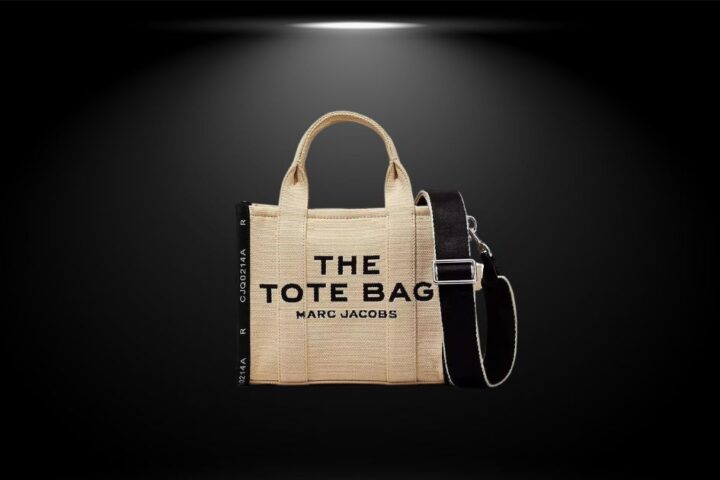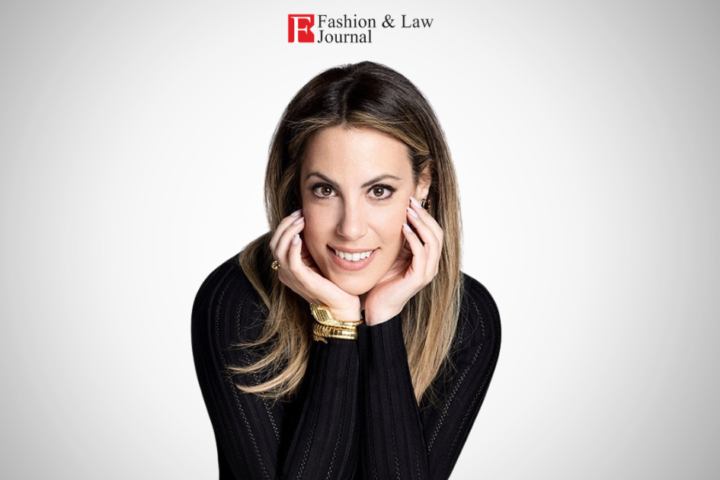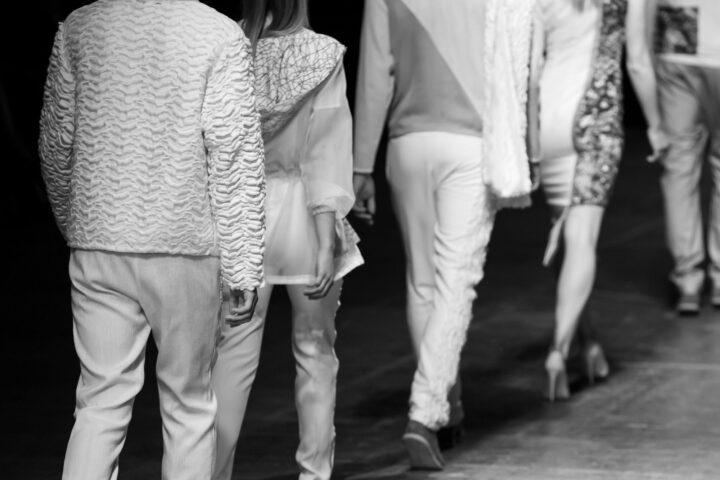“It’s not a bag. It’s a Birkin”.[1]
The Hermès Birkin bag stands as the ultimate status symbol in the world of luxury fashion, a symbol that seemingly money alone can’t buy. The notoriously exclusive process of purchasing the iconic handbag is now the target of a class-action lawsuit in the United States (US). In a complaint filed in a federal court in Northern California, two consumers are alleging that the company has violated antitrust and business practice laws by only allowing consumers to purchase a Birkin if they have a purchasing history with the brand.[2]
This lawsuit comes amidst something of a reckoning in global antitrust law. Regulatory bodies around the world, including the Federal Trade Commission (FTC) and the European Commission are clamping down on antitrust violations.
Competition law stands as the bedrock of modern economic regulation, ensuring fair play and innovation across industries. In the fashion industry, brands vie for consumer loyalty, driving fierce competition. Essentially, enforcement of competition law ensures innovation while protecting consumer interests, which is essential in this sector.
Acquiring a Birkin bag directly from Hermès is an abstruse journey as complex and arduous as the construction of each bag.[3] Hermès intentionally limits the production of Birkin bags, bestowing the opportunity to own one only to clients with a significant “sales profile” with the brand. This scarcity has made for a robust secondary market. Some rare and vintage models command significantly higher prices than their original retail prices, making them sought-after collector’s items.[4]
Once “To Die For”, Now “To Sue For”
The lawsuit against Hermès reveals a complex dispute involving alleged unlawful tying practices, market dynamics, and the relationship between consumer demand and brand exclusivity. The plaintiffs claim that Hermès forced them to buy additional products like apparel and scarves to obtain the coveted Birkin handbag.[5]
This legal action encompasses four claims for relief. Firstly, it alleges a violation of the Sherman Act,[6] citing Hermès’ tying arrangement as detrimental to competition and consumers. Secondly and thirdly, it asserts violations of California’s Cartwright Act,[7] highlighting the anticompetitive nature of Hermès’ conduct and its impact on market dynamics. Finally, the plaintiffs invoke California’s Unfair Competition Law,[8] arguing that Hermès’ illicit business practices warrant injunctive relief, restitution, damages, and disgorgement of profits. The plaintiffs seek to represent all US residents encountering similar difficulties in obtaining Birkin bags, with a specific subclass designated for California residents.[9]
The FTC emphasises that tied product arrangements imposed by sellers with significant market power could potentially breach antitrust laws.[10] The complaint argues that Hermès’ dominance in the market, driven by the high demand and limited supply of the handbags, grants it substantial market power.
Tying and Exclusive Dealing – Anticompetitive Practices or Strategic Business Moves?
Identifying exclusionary conduct presents a significant challenge in antitrust enforcement. Areas of concern, such as tying and exclusive dealing, have the potential to harm competition and create anticompetitive effects, but distinguishing between permissible and anticompetitive behaviour can be complex.[11]
The central question for antitrust policy revolves around designing effective rules that minimise the risk of false negatives (failing to identify anticompetitive practices) whilst also avoiding false positives (finding liability for efficient practices). Striking the right balance is crucial to ensure that antitrust enforcement promotes competition without unduly stifling procompetitive conduct.[12]Top of Form
Robert Bork, a proponent of the Chicago school of antitrust thought, argued in his influential 1978 book, “The Antitrust Paradox,” that applying economic theory is essential for effective antitrust law enforcement. He criticised US Supreme Court decisions on tying, asserting they lacked a robust economic basis. Bork’s stance, asserting tying’s potential for pro-competitive outcomes, has influenced subsequent court rulings, and spurred academic inquiry into game theory.[13]
He suggests that courts should presume efficiency justifications for tying arrangements that lead to cost savings, citing cases like International Salt v. United States.[14] Furthermore, Bork contends that even if market power exists, tying should not violate antitrust laws if it doesn’t enhance market power in the tied product market, as exemplified in International Business Machines Corporation v. United States.[15] This perspective challenges traditional interpretations of tying practices in antitrust law, emphasising the importance of considering efficiency and market dynamics in enforcement.
Recent game theory literature, including works by scholars like Carlton and Waldman, has challenged Bork’s stance on tying, illustrating scenarios where traditional Chicago school arguments may not hold true. These scholars have shown that tying can sometimes be employed to maintain or bolster a monopoly position, contrary to Bork’s assertions.[16]
However, the enduring significance of Bork’s contributions transcends the accuracy of his arguments. His impact is evident in the greater incorporation of economic theory in court decisions regarding tying and the increased scholarly attention to identifying when tying practices may be anticompetitive.[17]
The Devil Wears Hermès
In response to the complaint filed by the plaintiffs, Hermès could present several key arguments in their defence.
Firstly, they may argue that the critical element of coercion is missing because consumers are not being forced to acquire sub-par goods that they would not otherwise desire. Rather, the popularity and appeal of Hermès’ ancillary products indicate independent demand for these items in the market. Evidence of this can be seen in the significant sales of Hermès footwear and scarves, as well as the proliferation of “dupes” and knockoffs of these products, demonstrating consumer interest and willingness to purchase them regardless of their association with Birkin bags.[18]
The influx of knockoffs and imitations of Hermès’ sandals and silk scarves suggests that consumers are drawn to the brand’s aesthetic and craftsmanship, independent of its association with the bags. This indicates that Hermès’ ancillary products hold intrinsic value to consumers beyond their role in accessing exclusive items such as Birkin bags.[19]
By emphasising the genuine appeal and independent demand for its ancillary products, Hermès would undermine the plaintiffs’ argument that consumers are coerced into purchasing these items solely to gain access to Birkin bags. Instead, Hermès could portray its sales practices as driven by consumer choice and the inherent desirability of its products, rather than any coercive tactics or anticompetitive linking.[20]
Moreover, in response to the plaintiffs’ claims, Hermès’ counsel could employ a strategic defence by likening the Birkin-buying model to a loyalty program rather than an illegal tying scheme. Drawing parallels to widely accepted loyalty programs such as frequent flyer programs, Hermès could argue that their method of allocating Birkin bags is akin to rewarding loyal customers for their patronage.[21]
Brian Quinn, a professor specialising in corporate law,[22] suggests that if loyalty programs are generally regarded as legal and above-board by regulatory bodies like the FTC, Hermès could argue that their Birkin-buying model falls within the realm of legitimate business practices. By framing the allocation of Birkin bags as a form of a customer rewards program, Hermès could potentially deflect accusations of illegal tying.[23]
In addition to this, the plaintiffs argue that Hermès wields significant market power due to the unique desirability and limited supply of Birkin bags. Market power, a critical component in illegal tying claims, refers to a company’s ability to influence prices and control supply and demand within its industry. Hermès’ counsel could counter this by highlighting the presence of alternative sources for Birkin bags, particularly in the luxury resale market.[24]
The rise of the luxury resale market offers consumers alternative avenues to acquire Birkin bags without navigating Hermès’ purchase history requirements. Hermès could argue that the existence of a robust resale market mitigates any monopolistic tendencies it may possess in the primary market. If consumers have access to similar quality Birkin bags at comparable prices from other sources, Hermès’ market power may be called into question.[25]
To Birkin or Not to Birkin
The legal complaint against Hermès regarding its sales practices, particularly concerning the exclusivity of Birkin handbags, has stirred a diverse array of reactions. Critics have dismissed it as a “rich person problem,” suggesting that it is inconsequential to the broader public.[26]
The individuals seeking to purchase a Birkin are evidently wealthy, and presumably capable of purchasing a closet full of Hermès items before acquiring the iconic bag. The allure of exclusivity is precisely what makes the Birkin so desirable, which is why these customers will willingly participate in this pursuit. The plaintiffs are essentially suing the system that initially captivated them, and it is uncertain whether the legal system truly needs to safeguard these individuals from the game they appear to be willing to play.
Conclusion
As antitrust scrutiny extends its reach even to the world of luxury goods, it shines a spotlight on the interconnected nature of economic principles, market dynamics, and competitive practices.
Experts are uncertain about the merits of this case, noting that Hermès has a monopoly only over its own product and that it isn’t impacting shoppers at large. As Susan Scafidi notes, “Hermès has it in the bag”,[27] She explains that the luxury brand doesn’t tell buyers how much they need to spend to gain access to the Birkin, which makes it harder for the plaintiffs to pinpoint a problem within their policy.[28]
Hermès is not alone in employing sales strategies centred around cultivating long-term purchasing relationships for luxury accessories. Brands like Rolex and Porsche also operate on similar principles, where acquiring these status symbols can require years of dedication and patience.[29]
In addition to the profound implications this case may have on Hermès as a corporate entity, it also underscores the influence of material power within capitalist systems. Social media users have taken a light-hearted approach, drawing on pop culture references like an episode of Sex and the City to poke fun at the perceived triviality of the issue, leaving us to humorously ponder, “When Samantha finally got her Birkin bag, did she inadvertently violate US antitrust law?”[30]
References/Citations:
[1] Sex and the City, Season 4 Episode 11 (2001).
[2] Robert Williams, ‘Hermès Faces Class Action Suit Over Birkin Sales Practices’ (Business of Fashion, 20 March 2024) <www.businessoffashion.com/news/luxury/hermes-faces-class-action-suit-over-birkin-sales-practices> accessed 24 March 2024.
[3] Ibid.
[4] Ibid.
[5] Robert Williams, ‘Hermès Faces Class Action Suit Over Birkin Sales Practices’ (Business of Fashion, 20 March 2024) <www.businessoffashion.com/news/luxury/hermes-faces-class-action-suit-over-birkin-sales-practices> accessed 24 March 2024.
[6] Sherman Anti-Trust Act 1890.
[7] Cartwright Act, Business and Professions Codes s16700-16770.
[8] Unfair Competition Law, Business and Professions Codes s17200.
[9] Tina Cavalleri and Mark Glinoga v. Hermès International and Hermès of Paris Inc 3:24-cv-01707-AGT (ND Cal 2024).
[10] ‘Guided to Antitrust Laws: Tying the Sale of Two Products’ (Federal Trade Commission) <www.ftc.gov/advice-guidance/competition-guidance/guide-antitrust-law/single-firm-conduct/tying-sale-two-products> accessed 24 March 2024.
[11] Keith Hylton, Antitrust Law and Economics (Edward Elgar Publishing 2010).
[12] Ibid.
[13] Dennis Carlton and Michael Waldman, ‘The Contributions of Robert Bork to Antitrust Economics’ (2014) 57(3) The Journal of Law and Economics 121,144.
[14] International Salt Co Inc v United States 332 US 392 (1947) 46.
[15] International Business Machines Corp v United States 298 US 131 (1936) 758.
[16] Dennis Carlton and Michael Waldman, ‘The Contributions of Robert Bork to Antitrust Economics’ (2014) 57(3) The Journal of Law and Economics 121,144.
[17] Ibid.
[18] Julie Zerbo, ‘Does an Antitrust Case Over Hermès Birkin Bags Have Legs?’ (The Fashion Law, 22 March 2024) <www.thefashionlaw.com/does-an-antitrust-case-over-hermes-birkin-bags-have-legs/> accessed 24 March 2024.
[19] Ibid.
[20] Ibid.
[21] Ibid.
[22] Professor at Boston College Law School.
[23] Julie Zerbo, ‘Does an Antitrust Case Over Hermès Birkin Bags Have Legs?’ (The Fashion Law, 22 March 2024) <www.thefashionlaw.com/does-an-antitrust-case-over-hermes-birkin-bags-have-legs/> accessed 24 March 2024.
[24] Ibid.
[25] Ibid.
[26] Emma Bowman, ‘Hermès accused of antitrust violations by customers who tried to buy a Birkin bag’ (NPR, 21 March 2024) <www.npr.org/2024/03/21/1239940898/hermes-birkin-bag-antitrust-lawsuit> accessed 24 March 2024.
[27] Herb Scribner and Rachel Tashjian, ‘Hermès Has It in the Bag’: Legal Experts Weigh Birkin Lawsuit’ (Washington Post, 21 March 2024) <www.washingtonpost.com/style/fashion/2024/03/21/hermes-birkin-bag-lawsuit/> accessed 24 March 2024.
[28] Ibid.
[29] Meghan Morris, ‘2 People Are Suing Hermès Over Its Tough to Buy Birkin Bags’ (Business Insider, 20 March 2024) <www.businessinsider.com/hermes-lawsuit-birkin-bags-tough-to-buy-sales-practices-2024-3> accessed 24 March 2024.
[30] Emma Bowman, ‘Hermès accused of antitrust violations by customers who tried to buy a Birkin bag’ (NPR, 21 March 2024) <www.npr.org/2024/03/21/1239940898/hermes-birkin-bag-antitrust-lawsuit> accessed 24 March 2024.
About Authors:
 Niamh Doorey is a dedicated law student at the University of Galway, Ireland, whose academic pursuits are driven by a keen interest in the dynamic intersection between luxury fashion and the legal landscape. With a passion for delving into the intricate realms of antitrust and intellectual property law, Niamh is committed to unravelling the complexities that shape the ever-evolving relationship between the legal framework and the luxury fashion industry.
Niamh Doorey is a dedicated law student at the University of Galway, Ireland, whose academic pursuits are driven by a keen interest in the dynamic intersection between luxury fashion and the legal landscape. With a passion for delving into the intricate realms of antitrust and intellectual property law, Niamh is committed to unravelling the complexities that shape the ever-evolving relationship between the legal framework and the luxury fashion industry.
 Emily Crowe is a final-year student on the verge of completing her degree in law and human rights at the esteemed University of Ireland Galway. Beyond her academic pursuits, Emily possesses a distinct interest in the fashion industry. As she nears graduation, Emily’s academic journey has provided her not only with a solid foundation in law but also with an understanding of the nuances of fashion law, encompassing a wide range of specialties, including antitrust, IP & Technology, counterfeiting and licensing issues.
Emily Crowe is a final-year student on the verge of completing her degree in law and human rights at the esteemed University of Ireland Galway. Beyond her academic pursuits, Emily possesses a distinct interest in the fashion industry. As she nears graduation, Emily’s academic journey has provided her not only with a solid foundation in law but also with an understanding of the nuances of fashion law, encompassing a wide range of specialties, including antitrust, IP & Technology, counterfeiting and licensing issues.









